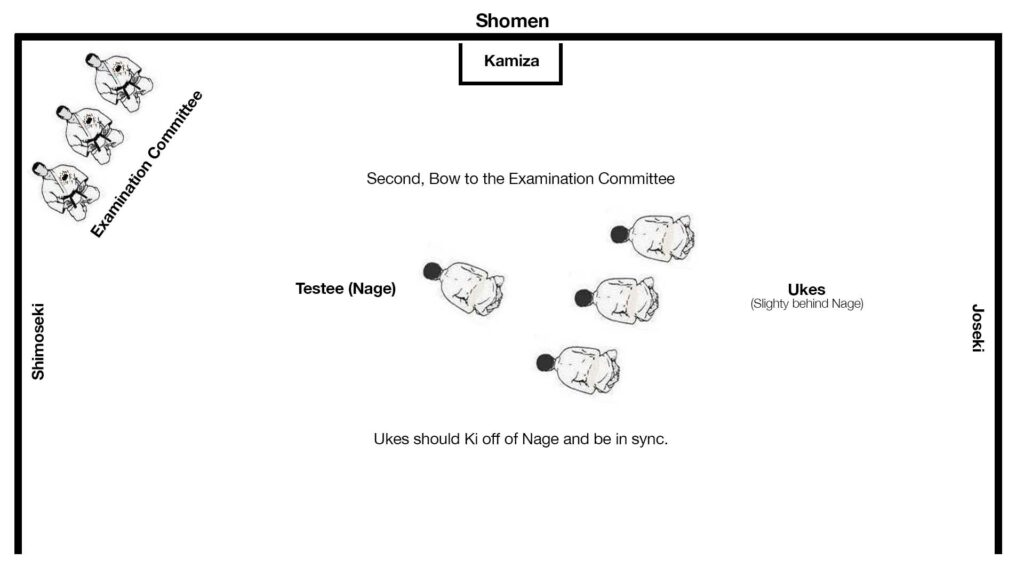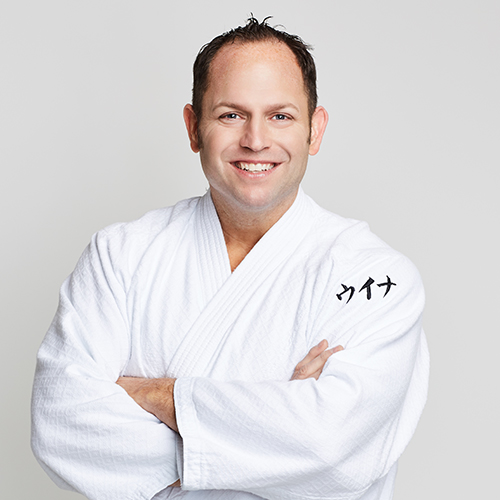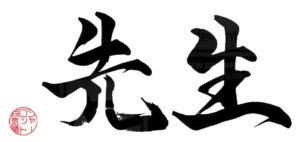Rank Testing Bowing Reiho – Advanced
Andy Demko Shihan likes to say, “The little things don’t mean a lot, they mean everything”. Everyone who has practiced in our dojo or visited has seen that we take Reiho (Etiquette) pretty seriously. In all that we do, practice. Bowing. Addressing each other & more. I learned a while ago that the WHY helps drive the REASON we do what we do. Well, when you have superb reiho, it not only reflects extremely well on you but your dojo, your teacher, and your organization. And I truly believe that while it take some skill, physicality and more to perform the aikido technique correctly, it takes far less to perform the reiho correctly. I tell my students it’s OK to make a mistake in the technique, both as nage & uke, but you should never make a mistake with the reiho (after a certain point, anyway). So why do some show more respect than others, basically another way of saying, this aikidoka’s reiho is good, his/hers is great & that person, not so much. First, were they taught it and if so, were they taught it correctly? Second, did they learn it? Third, do they practice it? Well, obviously, the person with all three typically has superb reiho. Some are instilled with it, others have to consciously remember to execute it. I do believe if you continue to get better at it, it becomes an unconscious effort. Like breathing. Today, I want to review bowing in for testing with some details. For most Kyu Tests and Shodan, the testee (nage) will typically have one Uke.
Step 1: When called out to test, both you & your Uke should arrive together, sit in seiza and wait for the Examination Committee to tell you to begin or hajime.
Step 2: Together, make a zarei (kneeling bow) to the Kamiza with the Testee (Nage) initiating. Uke should bow slightly after the testee and rise up slightly after the testee.
Step 3: Both the Testee (Nage) & Uke should make a pivot left (small turn off the right knee) together towards the Examination Committee

Step 4: Together, make a zarei (kneeling bow) to the Examination Committee with the Testee (Nage) initiating. Uke should bow slightly after the testee and rise up slightly after the testee.
(Both the Testee & Uke should not rise before the Examination Committee completes their bow)

Step 5: The Testee should make a pivot right (small turn off the left knee) to face their Uke.
Step 6: Make a zarei (kneeling bow) to each other with Testee (Nage) initiating. Uke should bow slightly after the testee and rise up slightly after the testee.
Remember, take your time with each bow and each step.

Nidan, Sandan & Yondan Bowing Etiquette
Step 1: When called out to test, both you & your Ukes should arrive together, sit in seiza and wait for the Examination Committee to tell you to begin or hajime.
Step 2: Together, make a zarei (kneeling bow) to the Kamiza with the Testee (Nage) initiating. Ukes should bow slightly after the testee and rise up slightly after the testee.
Step 3: Both the Testee (Nage) & Ukes should make a pivot left (small turn off the right knee) together towards the Examination Committee

Step 4: Together, make a zarei (kneeling bow) to the Examination with the Testee (Nage) initiating. Ukes should bow slightly after the testee and rise up slightly after the testee.
(Both the Testee & Ukes should not rise before the Examination Committee completes their bow)

Step 5: The Testee should make a pivot right (small turn off the left knee) to face their Ukes. Ukes should make pivot left (small right turn off the left knee), try and get back to being even with each other.
Step 6: Make a zarei (kneeling bow) to each other with Testee (Nage) initiating. Uke should bow slightly after the testee and rise up slightly after the testee.
Remember, take your time with each bow and each step.

So, to conclude, there are a lot of zarei (kneeling bows) and components to make this begining and end of your exam (test) look superior. Watch the proper way to perform Zarei here. Remember, don’t rush it. Uke’s should be reacting to Nage’s speed. Take your time. Slow down. Embrace it and Enjoy it. It will add more meaning to it as well as set the tone and pace of your martial understanding. Poor Reiho right at the start of the test puts a red X on that testee, and those watching that know the difference and can see it.
5 Questions with our Chief Instructor – Part 2
5 Questions with our Chief Instructor – Part 2 Jared Heintz: Aikido is often praised for its applicability in self-defense situations. Could you discuss how Aikido techniques can be adapted to real-world scenarios, and what mindset one should cultivate in such situations? Weiner Sensei: As I approach 25 years of Aikido practice, I’ve realized that…
Sensei
Sensei 先生 The two characters that make up the term can be directly translated as “born before,” and imply one who teaches based on wisdom gained from age and experience. In general usage, it is used, with proper form, after a person’s name and means “teacher.” In Japan, the word is also used as a…
5 Questions with our Chief Instructor – Part 1
5 Questions with our Chief Instructor Jack Freund: Why is attending seminars so valuable? Weiner Sensei: Seminars are valuable because so many things can take place in that style of training. Whether the seminar is one day or an entire weekend, it is an opportunity for all your focus to be on Aikido training. It…



